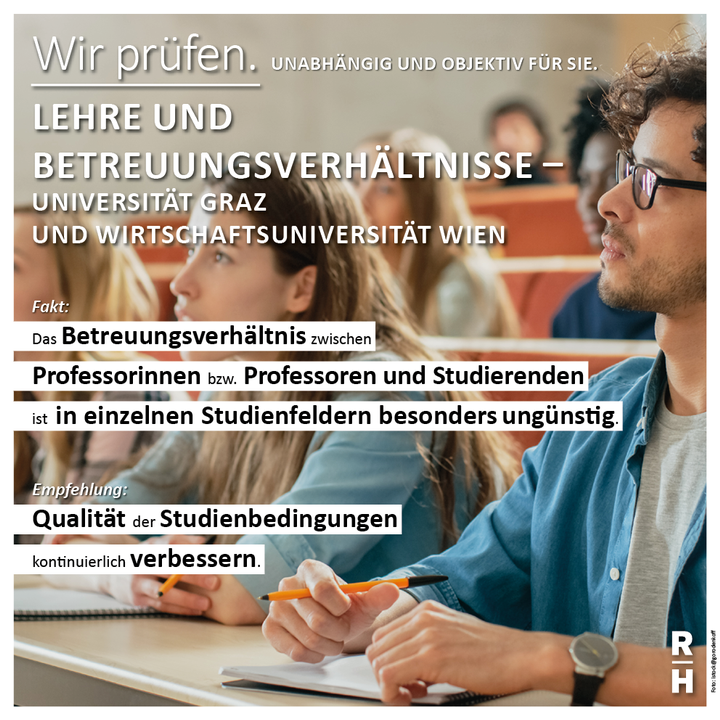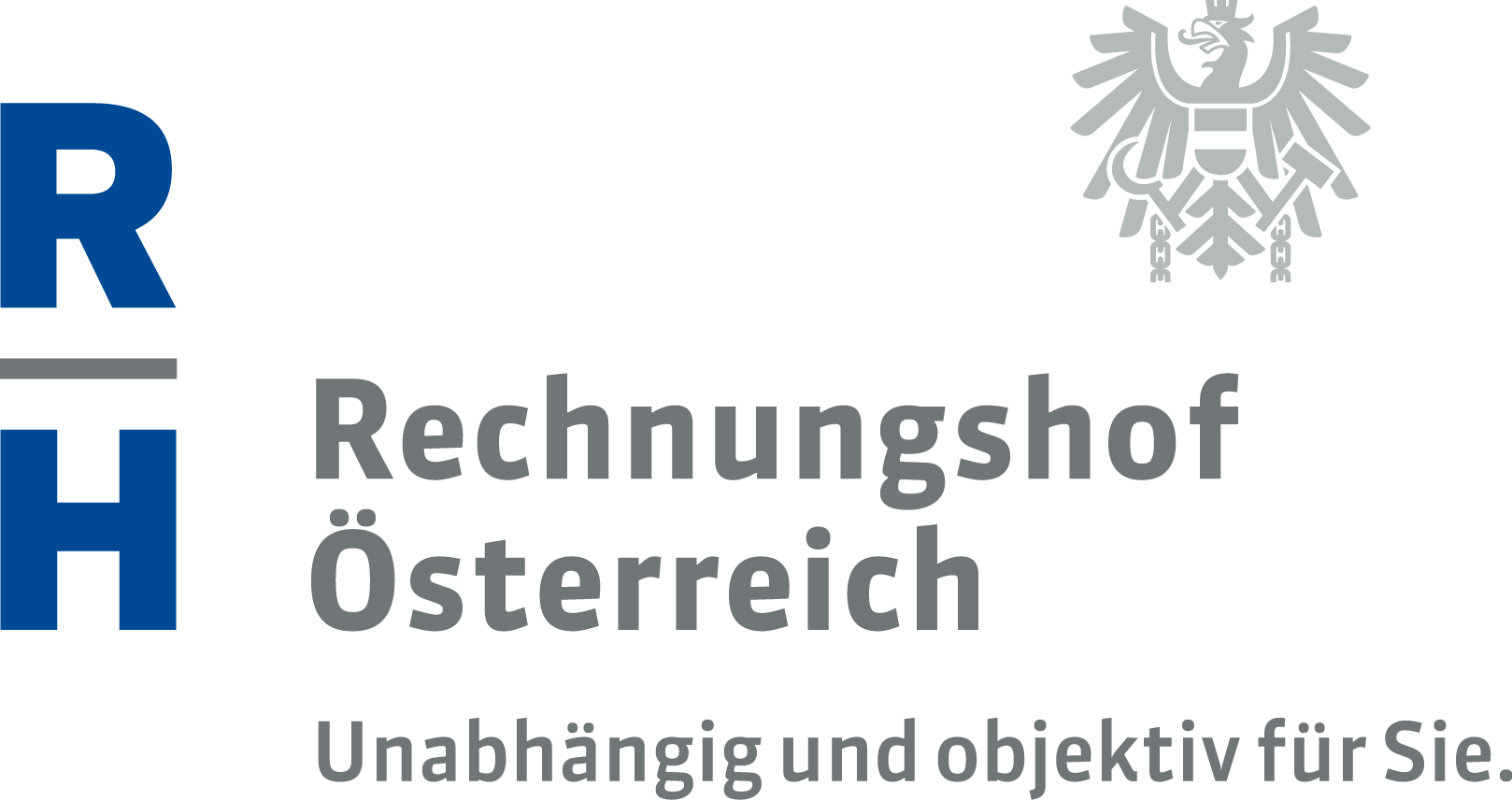Teacher-student ratios at universities are particularly adverse in some areas of study

The teacher-student ratio is particularly adverse in certain areas of study. At the Vienna University of Economics and Business (WU Vienna), for example, the ratio is at 1 : 140.5 as regards law. At some universities, the target ratio of 1 : 40 has already been achieved, and in some cases the actual ratio has even fallen below the target. Furthermore, at the University of Graz, in particular, teaching capacities remained unused. This is revealed in the report published today by the Austrian Court of Audit (ACA) on “Education and Teacher-Student Ratios – University of Graz and Vienna University of Economics and Business”. The ACA audited the academic years 2014/15 through 2018/19 at the University of Graz and the WU Vienna.
Good teacher-student ratio as a quality feature
The ratio of students to professors and comparable university staff such as lecturers is a significant indicator for the quality of the study conditions. The target of 1 : 40 stipulated in the Austrian university development plan („Gesamtösterreichischer Universitätsentwicklungsplan“) 2016-2021 was either partly achieved or the ratio remained even below the target. However, at large universities the target was clearly missed. Furthermore, the ACA revealed vast differences: the teacher-student ratio in the academic year 2018/19 was at 1 : 81.3 at the WU Vienna; at 1 : 47.6 at the University of Graz. In comparison, 10.2 students were mentored or supervised by a teacher at professor level at the University of Music and Performing Arts Vienna. At the Medical University of Vienna, the ration was at 1 : 12.3.
This broad range is also reflected within individual fields of study: at the University of Graz, the teacher-student ratio was at 1 : 54.8 for law; at the WU Vienna, one professor had to mentor or supervise 140.5 students in the academic year 2018/19.
When it comes to the overall ratio of students to professors – lecturers included – Austria is in the upper middle range with 1 : 14 compared to other OECD countries. The OECD average is at 1 : 16. The figures related to 2017. In order to further improve the quality of study programmes and to make a contribution to achieving the Sustainable Development Goal 4 “Quality Education” of the 2030 Agenda, the Federal Ministry of Education, Science and Research would have to take measures that raise the student-teacher ratios at public universities to the top level of the OECD countries.
Graduations decreased at the University of Graz and increased at the WU Vienna
In the audited period, university graduations increased by overall 2.6 per cent – from 34,300 to 35,201. At the University of Graz, the graduations fell by 5.5 per cent. In contrast, the WU Vienna recorded an increase of almost one third. The ACA recommends to the University of Graz to analyze the downward trend in university graduations and to take measures to reverse this trend.
Teaching capacities lie idle
During the audited period, the teaching capacity of the scientific permanent staff increased in both universities. The WU Vienna harnessed this development more effectively – namely to 97.4 per cent – than the University of Graz (93.1 per cent). At the faculties of the University of Graz comparable with the WU Vienna, the teaching capacity was used to only 84.5 per cent.
Students took exams in only about 60 per cent of the study programmes
In the academic year 2018/19, students took exams in only just under 60 per cent of all bachelor’s and master’s degree programmes and diploma courses. Students who are considered as "active" are those who earn at least 16 credit points according to the European Credit Transfer and Accumulation System (ECTS) within one academic year. For reference, a bachelor’s degree programme comprises 180 ECTS credit points. One ECTS point equals a workload of about 25 to 30 hours calculated over the entire semester. The ACA recommends to the Federal Ministry of Education, Science and Research, the University of Graz and the WU Vienna to continue to take measures to increase the taking of exams at the public and the audited universities.
- pdf Datei:
- 4,751.6 KB
- Umfang:
- 120 Seiten
Report: Education and Teacher-Student Ratios – University of Graz and Vienna University of Economics and Business (in German)
From May to September 2019, the ACA audited the education and the teacher-student ratios at the University of Graz, the Vienna University of Economics and Business and the Federal Ministry of Education, Science and Research, which is responsible for university-related matters. The audit aimed at assessing the teacher-student ratios based on significant indicators, and at evaluating the staff-related capacities and the actual deployment of staff for education, exams and the supervision of scientific papers. The ACA also assessed the organization and the outputs of teaching. The audited period spanned the years from 2014 through 2018, namely the academic years 2014/15 to 2018/19.


